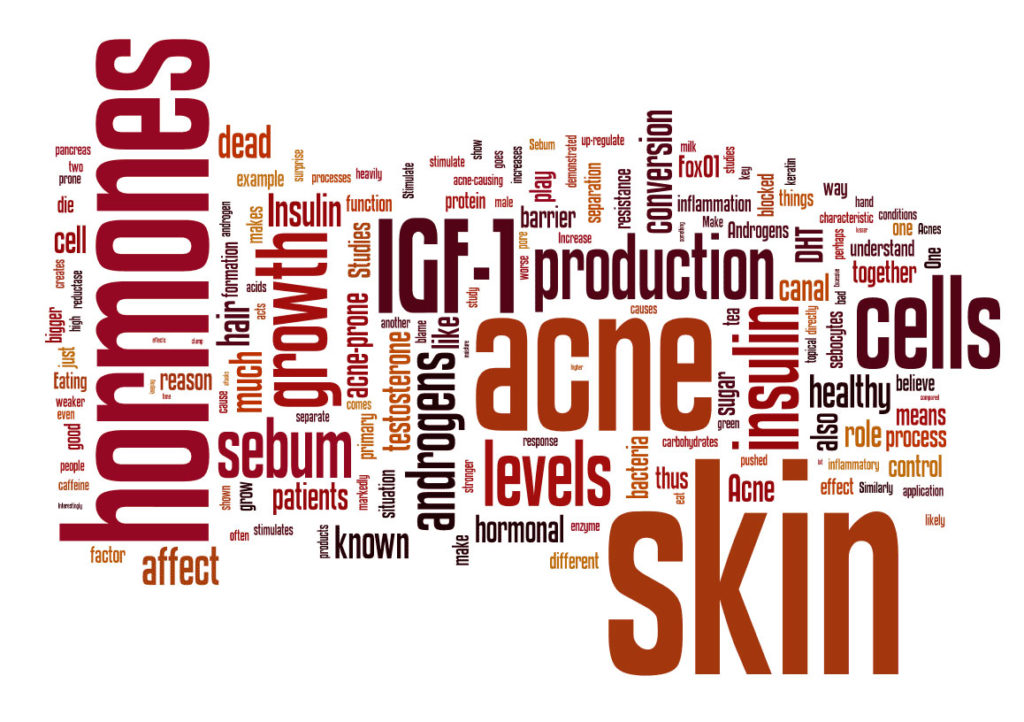by Chris D. Meletis, N.D.
What do grandchildren have in common with their grandparents? Turns out, more than you would think.
When things go wrong in the brains of both the very old and the very young, the cause is often the same. In children, the result is frequently autism. In seniors, it’s Alzheimer’s.
Both conditions take a huge toll on society. Alzheimer’s is the sixth leading cause of death in the United States. Autism rates are on the rise, with one out of 88 children suffering from the condition.
A Common Connection
So what do Alzheimer’s and autism have in common? For starters, there’s the fact that both children and adults are exposed to aluminum. By 18 months, children are already exposed to more aluminum from vaccinations than they will be exposed to the rest of their lives. Older people, meanwhile, have a lifetime accumulation of aluminum.
Daily, we’re exposed to aluminum from additives in commercially prepared foods, drinking water, sunscreens and deodorants. Like those for children, vaccines for adults can also expose us to aluminum. The amount of aluminum in vaccines can vary depending on the storage container. Storing vaccines in glass containers can up the aluminum content by 200 times compared to storing vaccines in plastic containers. (Aluminum leeches from the glass into the solution during autoclaving or storage.)
Small amounts of aluminum are absorbed into the circulation, crossing into the blood-brain barrier and accumulating in neurons of the brain regions vulnerable to Alzheimer’s damage. In this way, with advancing age, aluminum builds up in the brain and in the neurons.
In fact, the brains of people with Alzheimer’s disease tend to have higher concentrations of aluminum compared to subjects without the disease.1 In addition, compared to non-autistic children, autistic children also have high levels of aluminum.2
This aluminum build-up is a problem because aluminum is toxic to cells. Aluminum causes oxidative (free radical) damage on its own, and when it teams up with iron, there’s even more oxidative damage. Aluminum also competes with—and substitutes for—magnesium, iron and calcium ions and interferes with calcium metabolism.3
Getting rid of heavy metals such as aluminum by using chelators (substances that remove heavy metals from the body) has yielded some impressive effects. In 1991, researchers conducted a study using an iron/aluminum chelator and found that it slowed the progression of Alzheimer’s disease.4
Researchers also have blamed autism on the aluminum found in vaccines, although this topic is controversial. One group of Canadian researchers reported in 2011 that children from countries with the highest prevalence of autism appeared to have the highest exposure to aluminum from vaccines, and the increase in exposure to aluminum from vaccines significantly matches the increase in autistic spectrum disorder prevalence in the United States observed over the last two decades.
 They also found that there was a significant link between the amounts of aluminum administered to preschool children and the current prevalence of autistic spectrum disorder in seven Western countries, particularly at three to four months of age. The researchers concluded that aluminum in vaccines may cause autistic spectrum disorder.5
They also found that there was a significant link between the amounts of aluminum administered to preschool children and the current prevalence of autistic spectrum disorder in seven Western countries, particularly at three to four months of age. The researchers concluded that aluminum in vaccines may cause autistic spectrum disorder.5
A Toxic Environment = A Weakened Brain
It’s not just aluminum that can harm the brain. Other heavy metals such as mercury and lead are also linked to both Alzheimer’s and autism. In a review of the medical literature, researchers looked at studies that tested memory in individuals exposed to inorganic mercury. Thirty-two studies out of 40 found significant memory deficits in people exposed to mercury. In addition, some autopsy studies found increased mercury levels in brain tissues of Alzheimer’s patients.6
In cell culture and animal studies, exposure to inorganic mercury creates all the same pathological changes that occur in Alzheimer’s disease. Additionally, it may multiply the harmful effects of other metals, leading researchers to suggest that inorganic mercury may play a role as a co-factor in the development of Alzheimer’s disease.6
Likewise, fingers point at mercury as a possible culprit behind autism. Children who were postnatally poisoned with mercury developed articulation problems, from slow, slurred word production to an inability to generate meaningful speech.2 In another study, high mercury levels in autistic children were associated with a decreased ability to use objects and a decreased auditory response.2
Other researchers found significant elevations of environmental metals in children with autism. Mercury levels of the autistic group were 15 times higher than in the control group.7-8
Finally, lead is another culprit behind both Alzheimer’s and autism. Human and animal studies have found a possible association between lead exposure and the development of Alzheimer’s disease. Animals acutely exposed to lead accumulate more beta-amyloid plaque in brain extracellular spaces.9 The build up of beta-amyloid plaque in the brain is one of the primary causes of Alzheimer’s disease.
It’s a similar story for autism. Studies have found elevated blood, hair and urinary levels of lead and other heavy metals in autistic children.2
Another study in patients with autism found that the more toxic metals that were secreted when the subjects were given the chelator DMSA, the greater the severity of the autism. Several children initially without speech began talking after DMSA treatment in the study. DMSA was administered orally in 9 doses of 10 mg/kg, three times daily, over three days.10
The Myelin Connection
Heavy metals aren’t the only thread that ties Alzheimer’s and autism together. Another connection is myelin, the sheath that insulates the brain’s circuitry.
Until a child is 18 months old, the myelin hasn’t completely formed. In adults, that myelin sheath starts to unwrap itself around the age of 50. Lacking the protective myelin, the brain is more vulnerable to toxins both during early childhood and as we grow older.
Some of the most common drugs used for psychiatric disorders—lithium, antipsychotics, serotonin reuptake inhibitors (SSRIs) and acetylcholinesterase inhibitors—work in a wide range of conditions, from autism and schizophrenia to depression, bipolar disorder and Alzheimer’s disease. The reason why these drugs aren’t specific to one disorder, researchers believe, is because all of these drugs have one thing in common—they’re able to influence complex pathways that affect myelination and its repair.11
Hormonal Mimics
Sex hormones such as estrogen not only influence reproductive functions and organs, they also have beneficial effects on the brain both during development and adulthood. The problem arises when we encounter environmental chemicals that mimic and compete with estrogen or male hormones (androgens) such as testosterone. These environmental chemicals are often referred to as endocrine disrupters.
Researchers have linked endocrine disrupters to both Alzheimer’s and autism. You need both androgens and estrogens to preserve cognitive function during aging and to help protect against Alzheimer’s disease. However, the endocrine-disrupting chemicals in the environment interfere with the function of estrogen and androgens and potentially impair neurogenesis (the birth of brain cells). According to one researcher, these chemicals “represent a hazard for the preservation of cognitive function during the later stages of the life cycle.”12
Interestingly, one of the most common forms of hormone replacement therapy, Premarin®, also interferes with the normal activity of new neurons. In a rodent study, Premarin® impaired spatial reference and working, learning and memory in female rats, indicating that Premarin® may be impairing learning and memory in the brain by disrupting normal activity of new neurons.13
Researchers have noted the same link between endocrine-disrupting chemicals and autism in children who were exposed in the womb or shortly after birth to the toxins. In reviewing the medical literature, scientists found associations between autistic spectrum disorder and exposure to all chemicals investigated, including hazardous air pollutants, pesticides and bisphenol A (BPA).14
Another Piece of the Puzzle
Methylation is another connection between autism and Alzheimer’s. Methylation is critical for human survival. Think of it as a switch that turns genes on and off. Methylation regulates regular cell division, ensuring cells divide at a healthy, balanced rate.
DNA methylation changes the gene expression pattern in cells so that the cells remember where they have been. For example, cells that are programmed to be part of the pancreas during embryonic development will continue to function in this fashion without needing continual signals telling them to do so. DNA methylation also inhibits expression of viral genes and other damaging elements woven into genes over time.
Normal development can’t continue without DNA methylation. That’s because methylation allows different cells to morph into different tissues, even though they have the same genes.
On the flip side, throughout our lives, as we’re exposed to environmental and dietary changes, DNA methylation continues, and can also lead to disease. For example, changes in DNA methylation occur as the result of the harmful effects caused by exposure to environmental toxins such as bisphenol A, some organochlorines, polybrominated flame retardants, phthalates, pesticides, solvents and some household products such as air fresheners, hair dyes, cosmetics and sunscreens.
Likewise, a diet low in antioxidant-rich fruits and vegetables increases the risk of developing methylation defects. These defects can involve methylation that is either underactive or overactive.
The key is balance. We don’t want methylation to occur too much (hypermethylation) or too little (hypomethylation). If methylation isn’t progressing properly, neither is cell synthesis, making it nearly impossible to recover from tissue damage.
A 2010 study published online in the FASEB Journal has established a link between methylation and autism and suggests that blocking the methylation of certain genes may reverse symptoms of the disorder.15
The researchers also discovered that drugs that influence the methylation state of genes could reverse autism’s effects. This new discovery raises hope that autism may be more easily diagnosed, and that its effects may be more reversible than previously thought.
Scientists also have found differences in DNA methylation between healthy elderly subjects and people with Alzheimer’s disease.16
Other studies have linked Alzheimer’s disease to hypermethylation and hypomethylation. Because Alzheimer’s and bipolar disorder have some similar characteristics, such as elevated levels of inflammatory markers, researchers investigated whether methylation had a role to play in both disorders.
They measured methylation in postmortem samples from the frontal cortex of the brain in bipolar disorder and Alzheimer’s patients and respective age-matched controls. Both Alzheimer’s and bipolar disorder brains had DNA hypermethylation and hypomethylation.17
Boosting Brain Health in Youths and Seniors
The first step in improving cognitive abilities in both autistic children and people with Alzheimer’s is to establish a good aerobic exercise program. Aerobic exercise improves the academic function of children with autism,18while walking stabilizes cognitive function in Alzheimer’s patients.19Alzheimer’s patients who walked for more than two hours per week had a significant improvement in Mini-Mental State Examination scores, a questionnaire used to estimate the severity of cognitive impairment.19
The next step is to make certain autistic children and Alzheimer’s patients are taking a good B-complex supplement. Vitamins B6 and B12 along with folate help balance methylation so that it’s neither underactive nor overactive. If an individual has a MTHF-reductase genetic defect, supplements of folic acid in the form of MTHF (the active form of folic acid), as opposed to regular folic acid, is often necessary for optimal nutritional support.
Detoxification is another important way to enhance brain health, by removing cognitive-destroying chemicals. A good detox drink can do wonders to rid the body of endocrine disrupters and other toxins.
As noted above, DMSA is also highly effective at removing lead, mercury and other heavy metals. Prior to implementing a detoxification program, ask your doctor to test you for heavy metals and test again after detoxification so you can measure the results of your efforts.
Additionally, today’s diets are deficient in iodine, an important cognitive-enhancing nutrient. Substances we’re exposed to in the environment and in our diets, such as bromide and fluoride, compete with iodine in the body and are another cause of iodine deficiency. Iodine is important for proper thyroid functioning and ensures there is enough energy metabolism in brain cells.20When pregnant women don’t get enough iodine, it causes severe cerebral dysfunction in the infant.20
Rat studies indicate that iodine deficiencies can cause reduced brain weight and limited myelin formation.21
Different Diseases, Same Causes
At first glance, Alzheimer’s and autism may seem like two different diseases. But a closer look reveals that both of these conditions may be caused by many of the same things, such as exposure to heavy metals and endocrine-disrupting chemicals as well as disruptions to an important process called methylation. Detoxifying the body, exercising and consuming key nutritional supplements can go a long way in boosting cognitive health.
References:
1. Rusina R, et al. Neurotox Res. 2011 Nov;20(4):329-33.
2. Blaurock-Busch E, et al. Maedica (Buchar) 2012 Jan;7(1):38-48.
3. Walton JR. J Alzheimers Dis. 2012;29(2):255-73.
4. Percy ME, et al. J Inorg Biochem. 2011 Nov;105(11):1505-12.
5. Tomlienovic L, Shaw CA. J Inorg Biochem. 2011 Nov;105(11):1489-99.
6. Mutter J, et al. J Alzheimers Dis. 2010;22(2):357-74.
7. Hassanien MA, El Shahawy AM. Environm Risk. 2011;1:1-25.
8. El-Baz F, et al. Egypt J Med Human Gen. 2010;11:135-141.
9. Gu H, et al. Toxicol Lett. 2012 Sep 3;213(2):211-9.
10. Adams JB, et al. Journal of Toxicology. 2009;Article ID 532640; doi:10.1155/2009/532640
11. Bartzokis G. Neuropharmacology. 2012 Jun;62(7):2137-53.
12. Weiss B. Neurotoxicology. 2007 Sep;28(5):938-50.
13. Barha CK, Galea LA. Neurobiol Aging. 2012 Aug 28. [Epub ahead of print.]
14. de Cock M, et al. Acta Paediatr. 2012 Aug;101(8):811-8.
15. Nguyen A, et al. FASEB J. 2010 Aug;24(8):3036-51.
16. Furuva TK, et al. Neurochem Int. 2012 Jul 23. [Epub ahead of print.]
17. Rao JS, et al. Transl Psychiatry. 2012 Jul 3;2:e132.
18. Oriel KN, et al. Pediatr Phys Ther. 2011 Summer;23(2):187-93.
19. Winchester J, et al. Arch Gerontol Geriatr. 2013 Jan-Feb;56(1):96-103.
20. Bourre JM. J Nutr Health Aging. 2006 Sep-Oct;10(5):377-85.
21. Foster HD. Med Hypotheses. 1987 Nov;24(3):249-63.
See on www.wholehealthinsider.com



